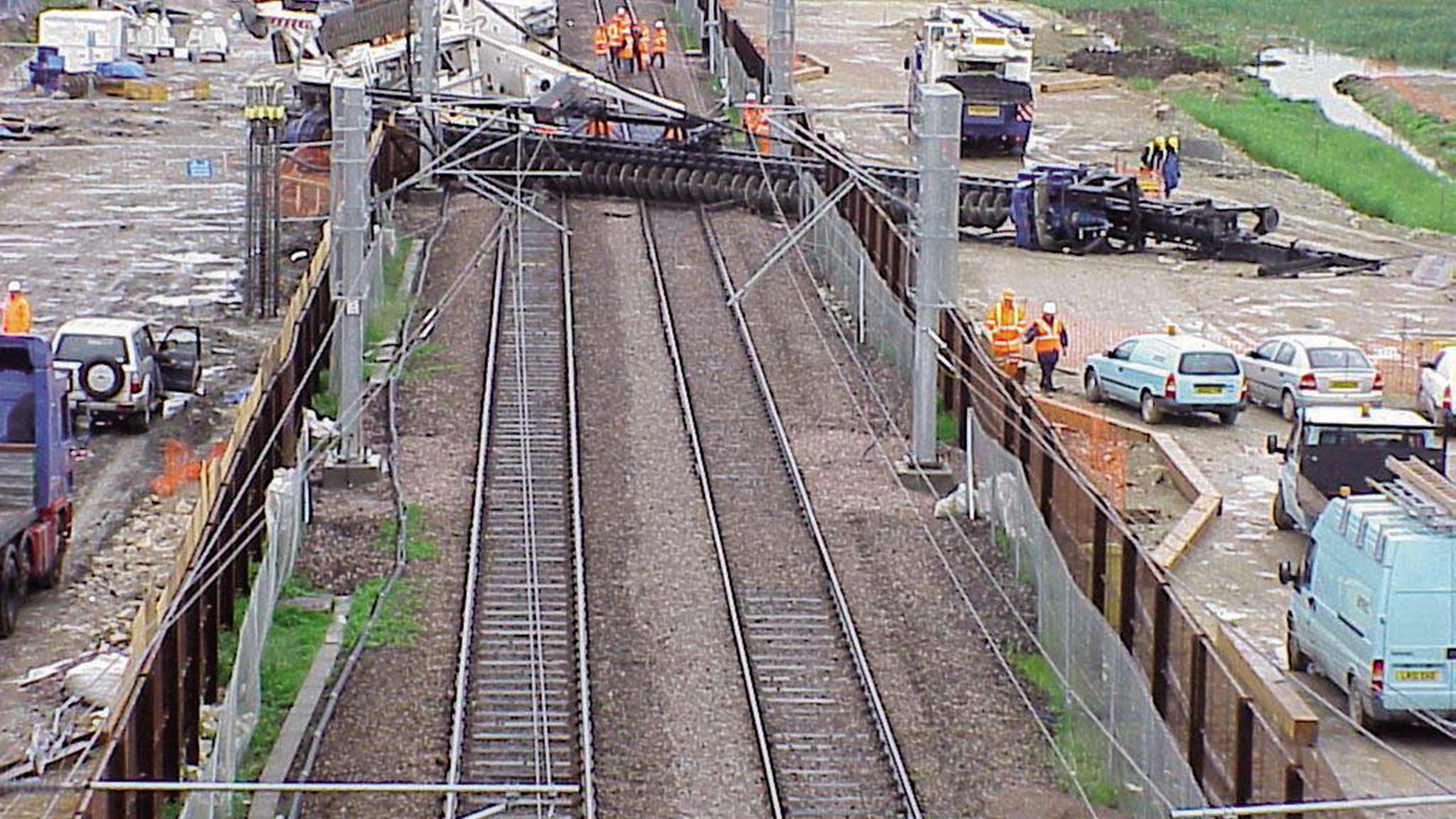
Piling rigs overturning on construction sites
A guide to loss prevention
properties.trackTitle
properties.trackSubtitle
Each year, piling rigs topple causing significant property damage and potential business interruption claims. This is usually due to inadequately prepared or maintained site surfaces.
Modern piling rigs can weigh as much as 200 tonnes and have a high centre of gravity. The ‘leader’ part of a rig can be up to 30 metres high, thus the high centre of gravity, high static weight, and the forces exerted while rigs operate or move mean that the ground conditions beneath such rigs is a critical safety issue.
The stability of tracked plant depends on the provision of a well prepared, inspected and maintained site surface.
Good co-ordination between piling companies and the principal site contractors is essential. Details of the plant to be used and bearing pressures must be provided, and the site surfaces must be correctly prepared in advance of work commencing.
Safety co-ordination requires:
- Planning: Sufficient time must be spent on planning the safety of the construction operations.
- Space on site: Working schedules can be tight; foundation contractors may be asked to arrive with several piling rigs simultaneously at a site that is too small to accommodate them.
- Space around the site: Stability of equipment is crucial due to the height of the rigs.
Common terms
Piling rig: A construction machine mainly used to drill/create piles in soil, clay, etc. Widely used for cast-in-place piles, diaphragm walls, and foundation reinforcement. Max. pile diameter typically 1.5-4m, max. pile depth from 60-90m. Generally with crawler chassis, box-type mast, and telescopic drill pipe. Mainly used in foundation engineering of elevated roads, bridges, industrial and civil buildings, slope protection, etc.
Working platform: Temporary geotechnical structures providing a stable working surface for piling rigs, mobile cranes and other heavy construction equipment. A working platform is the foundation for a piling rig which may weigh up to 200 tonnes.
Working Platform Certificate: A certificate which confirms the working platform has been properly designed and constructed in accordance with the design, and that it will be adequately maintained to ensure the ongoing integrity of the platform.
It requires the signature of the main contractor on the project and must be handed to the piling contractor before piling or other foundation work commences. The certificate introduces a system for highlighting specific responsibilities, increasing safety awareness and highlighting the importance of maintaining the platform in good condition.
Key components of a safe piling rig operational plan include:
1. Adequate pre-planning
2. Working platform
A working platform is the name given to the designated area of the site over which the piling rig will travel during its delivery to site, piling operations, and removal.
The design, installation, maintenance and repair of the working platform should be the responsibility of the main contractor. The ground needs to be checked and its stability confirmed. This may include load and integrity testing, investigation of any irregularities and any necessary remedial works. The ground must be free-draining to prevent the build-up of water and slurry. In certain cases, separation/filter membranes may need to be installed beneath the platform material to prevent damage/weakness of the ground strength.
3. Working Platform Certificate
The use of ‘Working Platform Certificates’ is increasingly being seen as a way to ensure the following:
- the correct procedures have been followed
- the ground is adequate to support the piling rig
- there are no irregularities that could result in local subsidence and toppling
A visual inspection can only check the ground surface. It is important to check the underlying material, the quality of the fill, its construction and depth (and the application of any membrane material if required). The piling contractor should advise what rigs are to be used, including the bearing pressures, dimensions and working space required. These details should be summarised on the Working Platform Certificate.
4. Inspection of piling equipment prior to the start of piling operations
5. Inspection of the site during piling

The ground surface can deteriorate over time. Excavations, trenches, or other holes dug must be properly backfilled to avoid creating soft spots that might give way under the tracks of a piling rig. A 1sq.m soft spot can be sufficient to unbalance a piling rig and cause it to topple over.
The edge of the ground to be used by the piling rig needs to be clearly defined (ground preparation should extend beyond the working area required) and should be regularly inspected to identify and correct any degradation.
6. Risk assessment
7. Operator training
8. Permits to Work
9. Qualified banksman
10. Pre-planning for maintenance and refuelling
Practical considerations
UK Building Research Establishment - BR 470 ‘Working platforms for tracked plant’ - ISBN 1 86081 7009
Case study
Piling rig falls across live passenger/freight railway lines
During piling works on a major railway infrastructure project, a CFA piling rig fell across adjacent live passenger and freight railway lines.
Ground conditions at the piling site were somewhat marsh-like and a critical geotextile membrane was relied upon to prevent the stone working platform being displaced into the peat.
To remove an obstruction the contractor dug a trench in the piling platform, which damaged the critical geotextile membrane. The trench was then poorly backfilled. When the rig crossed the trench, the ground settled under one side causing the piling rig to overturn across the live railway lines; bringing down a 25,000 volt overhead catenary during rush hour.
A passenger train had passed by just two minutes earlier - fortunately there were no injuries; however, the railway line was closed for three days. A prosecution and substantial fine ensued. The subsequent investigation found that a significant contributing factor was the breakdown of communication between senior and junior site managers, who were not aware how critical the piling platform and design was, or the need to involve the platform design engineer in any repairs.


